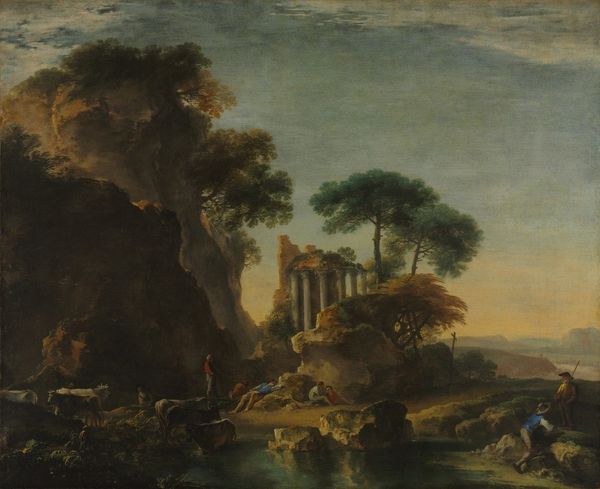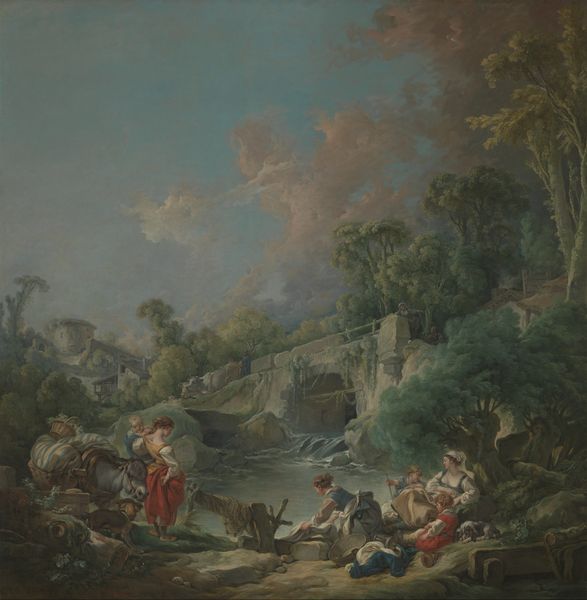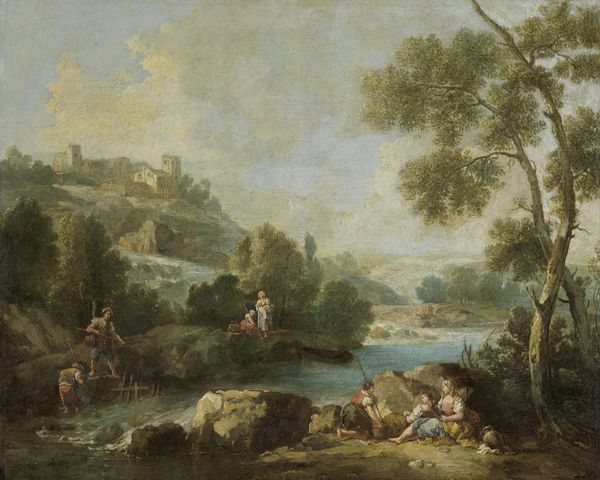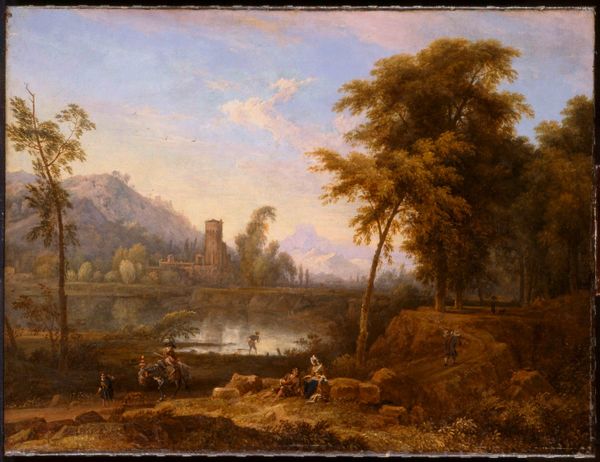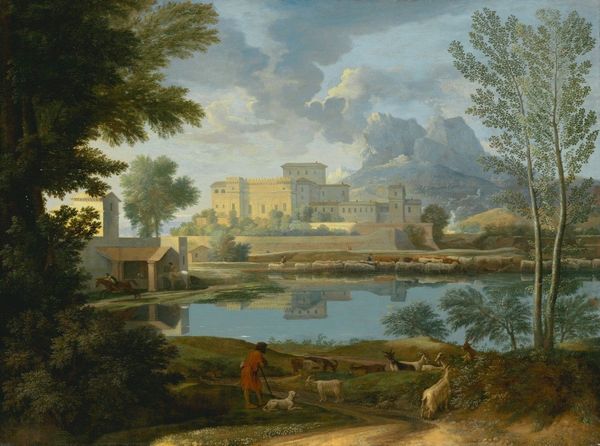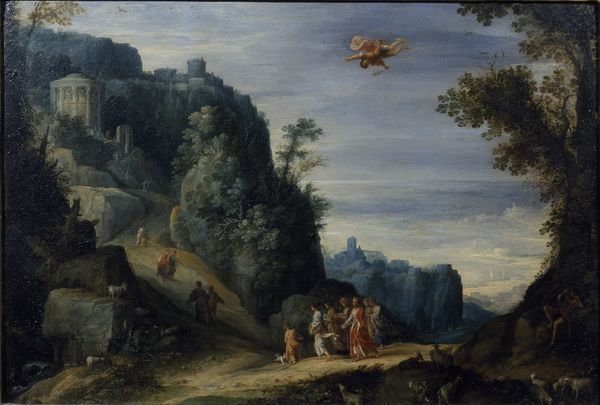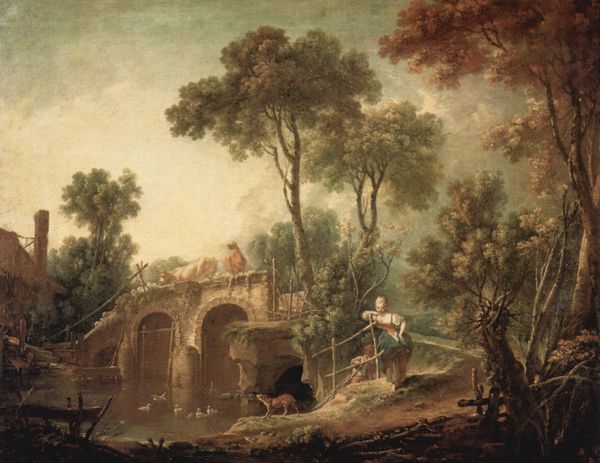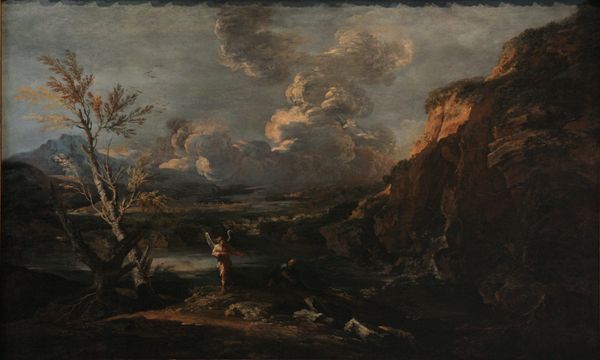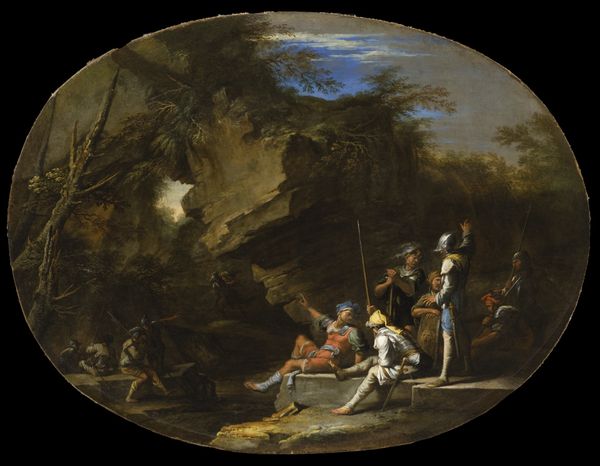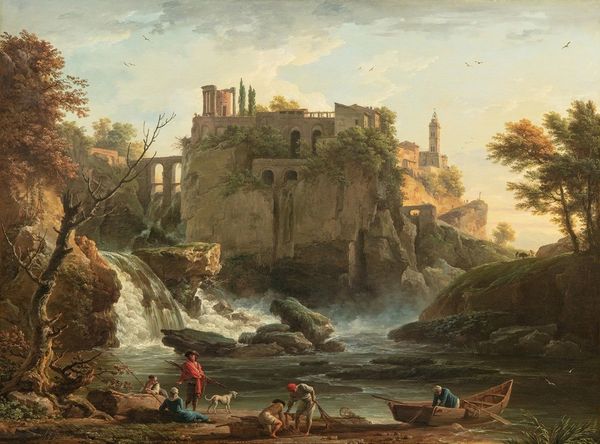
River Landscape with Ruin and Bridge 1762
0:00
0:00
francoisboucher
Thyssen-Bornemisza Museum, Madrid, Spain
Dimensions: 58.5 x 72 cm
Copyright: Public domain
Editor: So, this is François Boucher's "River Landscape with Ruin and Bridge," painted in 1762 using oil. There's something really idyllic and a bit melancholic about the ruins, almost like a memory fading. How do you interpret this work, especially considering the prominence of those ruins? Curator: The ruin speaks volumes. Think of the power these structures once held – the stories, the lives lived. Now, overtaken by nature, they become picturesque symbols of transience, reminding us of time's relentless march. The river, eternally flowing, acts as a poignant counterpoint to the crumbling stone, don’t you think? It evokes the constant flow of history, eroding some things while giving life to others. Editor: That's a really interesting point about the river as a symbol! It made me think: is Boucher using the ruin not just to represent decay, but perhaps also a commentary on civilization itself? Curator: Absolutely. In Boucher’s time, ruins were often romanticized. They represented the classical past, but also the fleeting nature of empires. Consider how Boucher places figures within the landscape – dwarfed by both nature and these decaying monuments. Are they witnesses, inhabitants, or even oblivious to the symbolic weight around them? Does that give you more insights? Editor: I guess they are somewhat oblivious. All that historical significance looming behind them, and they are just crossing the river! Curator: Indeed. And consider the fisherman on the bridge. Is he simply seeking sustenance, or is there a deeper symbolism at play, hinting at the rewards that come from patience, perhaps wisdom gained over time as civilizations rise and fall? The ruins could very well be that 'rise and fall' made visible. Editor: That is very thought provoking! Thank you, I will look at landscapes in museums very differently now. Curator: My pleasure. Paying attention to symbols truly unlocks a painting's deeper cultural significance.
Comments
No comments
Be the first to comment and join the conversation on the ultimate creative platform.
